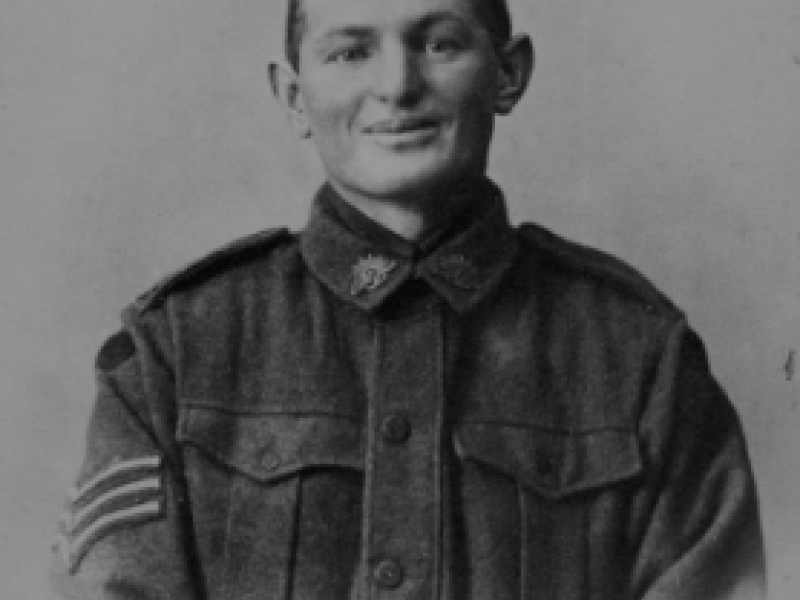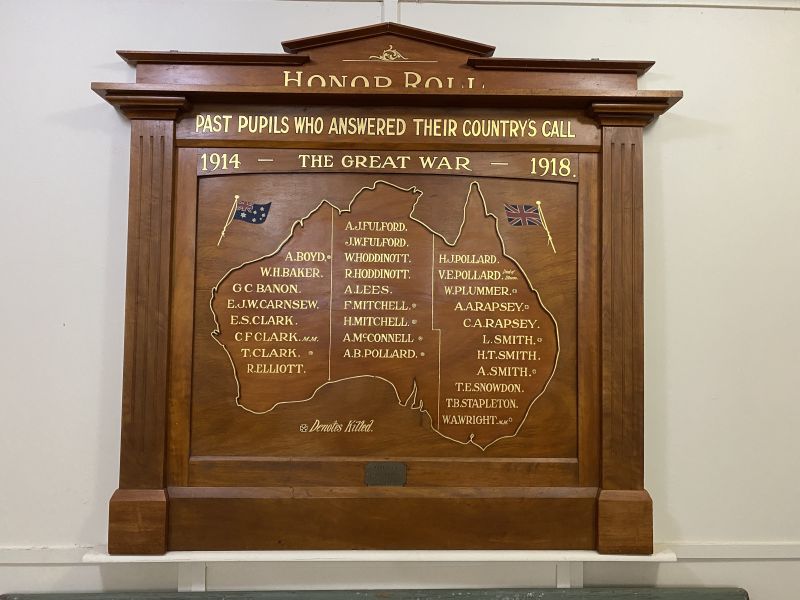William Alfred Wright
Bill was born in 1893 in, according to his service records, Wangaratta, Victoria. He was one of five children to Thomas and Hannah (née McGavin) Wright. The Wright family farmed in the Ebden area, although their old property is now under the Hume Weir. Bill, or Willie as he was called by his family, went to school at the nearby Bonegilla State School. After leaving school he worked as a farm labourer.
At the age of 22 and 10 months, Bill enlisted in the 1st AIF at Wangaratta, Victoria. He was allotted the Regimental Number 702 and attached to B Company of the 36th Infantry Battalion, 9th Brigade, 3rd Australian Division. Prior to enlisting, Bill had been a member of the 17th Battery, 5th Field Artillery in Albury, a unit that would win a reputation for its accuracy of fire and a commendation for action in battle on the Western Front.
After their initial training in Victoria, the 37th embarked on HMAT A34 Persic at Melbourne on the 3rd of June 1916. The ship sailed via Albany, Cape Town and Saint Vincent before arriving at Plymouth, England on the 25th of July. The battalion entrained at Plymouth and arrived at Amesbury, Wiltshire early the following morning. The troops then marched the short distance to No. 5 Camp at Lark Hill. Bill was one of the many troops that were admitted to hospital suffering from the mumps. It’s unsure when he was admitted to hospital but his records indicate that he rejoined his unit on the 24th of October.
One month later the battalion was sent to France and within the week they were occupying trenches on the Western Front. During March of 1917, Bill was sent to the 3rd Divisional School. Over the next few months Bill would be promoted and then dropped in ranks. This was often to allow NCO (non-commissioned officers) positions to be filled due to illness or recovering from wounds. By early September he would hold the permanent rank of Sergeant.
In early June the battalion fought its first major action at Messines. It would suffer over 400 casualties as a result of fighting. Captain Robert Grieve of A Company would be awarded the battalion’s only VC (Victoria Cross) of the war during this action. The second major attack experienced by the 37th would take place in early October when twelve Allied Divisions, including all from the 1 and 2 ANZAC Divisions, attacked Broodseinde Ridge. The attack began at dawn and Australian troops were heavily shelled on their start line, resulting in a seventh of their number becoming casualties. In a twist of fate the advancing Australians were confronted with German troops advancing towards them. Both sides had planned an offensive to start at exactly the same time and same day. Although all objectives were taken by the Australians, it was at a cost of over 6500 casualties.
Bill’s efforts that day saw him awarded the Military Medal. The Commonwealth Gazette notice stated; “On 4th October 1917, East of YPRES, he displayed conspicuous gallantry in action. Although severely wounded shortly after Zero hour he continued to lead and encourage his men throughout the attack. He bombed an enemy Machine Gun crew and assisted in bayoneting the remainder. Later on, seeing another Machine gun coming into action, he promptly attacked and overcame the crew, and thus undoubtedly prevented many casualties.”
A little over a week later the Australian Divisions were involved in the first battle of Passchendaele (Third Battle of Ypres). The objective of this action was to take and hold the Passchendaele Ridge from the Germans. The vicious fighting that took place was done under atrocious muddy conditions. Prior to Zero hour it began to rain, causing the already water-logged landscape to become a sea of mud. The first push towards the village of Passchendaele saw minor advances. Some ground was gained and pillboxes captured, but German counter-attacks pushed most of the Allied troops back. The attack was called off the following day and would not resume until October the 26th. One this one day the 37th Battalion would suffer over 70 killed and missing and another 180 wounded. Bill was listed as one of those killed in action.
Bill’s Red Cross Society Wounded and Missing Enquiry Bureau file shows us how difficult it is to reach a conclusion when relying upon different witnesses to an event. Of the four witness statements that are in the file two state that Bill was killed by shrapnel, one by sniper’s bullets and the other by machine gun fire. All agree that he was buried where he fell as it was impossible to remove his body to a cemetery.
Bill has no known grave. He is remembered on the Australian War Memorial Roll of Honour, the Menin Gate Memorial in Ypres, Flanders, Belgium, and the Bonegilla State School Honour Roll. For his service during the First World War, he was awarded the Military Medal, the British War Medal

 Stephen Learmonth
Stephen Learmonth